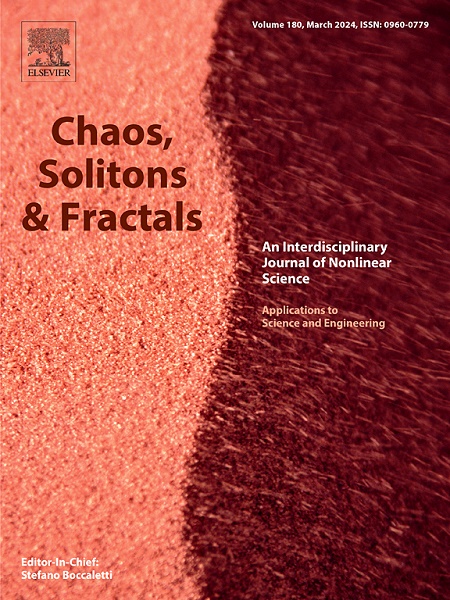Negative derivative feedback control and bifurcation in a two-degree-of-freedom coupled dynamical system
IF 5.3
1区 数学
Q1 MATHEMATICS, INTERDISCIPLINARY APPLICATIONS
引用次数: 0
Abstract
A popular benchmark problem in the field of control is the cart-pendulum system. The system has only one control input for two degrees of freedom (2DOF), making it utterly underactuated. Its highly nonlinear structure makes it suitable for validating a variety of linear and nonlinear controllers. There are numerous applications, such as rocket propellers, tank missile launchers, self-balancing robots, ship stabilisation, earthquake-resistant building design, etc. This work describes a control and bifurcation method for the response vibrations of the 2DOF auto-parametric pendulum (Cart-pendulum) model with harmonic excitation. To reduce the detrimental vibrations created by the system's operation, it is managed via negative derivative feedback (NDF). Bifurcation analysis is conducted on the studied model at two different gain values of the controller to identify various bifurcations occurring within the system. The main aim of this study is to explore the effectiveness of the control method and bifurcation analysis in stabilising pendulum vibrations. By using the averaging technique to solve the nonlinear differential equations and modelling the system using an NDF controller, an analytical solution is produced. The Runge–Kutta technique fourth-order (RK4) is used to compare the approximate answers to the numerical simulations and find a good match. The stability and steady-state amplitude of nonlinear systems were examined and compared before and after control. After implementing the NDF control mechanism, it was discovered that a number of system factors had an impact. To verify their comparability, MATLAB software was used to compare the numerical and analytical solutions at time-history and FRCs. Frequency response curves (FRCs) and ideal system operating conditions were investigated at different controller and system parameter values. Finally, the chaos motion and vibration amplitude of the system are suppressed by the control systems.
求助全文
约1分钟内获得全文
求助全文
来源期刊

Chaos Solitons & Fractals
物理-数学跨学科应用
CiteScore
13.20
自引率
10.30%
发文量
1087
审稿时长
9 months
期刊介绍:
Chaos, Solitons & Fractals strives to establish itself as a premier journal in the interdisciplinary realm of Nonlinear Science, Non-equilibrium, and Complex Phenomena. It welcomes submissions covering a broad spectrum of topics within this field, including dynamics, non-equilibrium processes in physics, chemistry, and geophysics, complex matter and networks, mathematical models, computational biology, applications to quantum and mesoscopic phenomena, fluctuations and random processes, self-organization, and social phenomena.
 求助内容:
求助内容: 应助结果提醒方式:
应助结果提醒方式:


